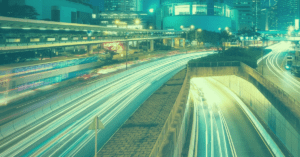
© California Bicycle Coalition 2023

1017 L Street #288
Sacramento, CA 95814
© California Bicycle Coalition 2023

The advent of autonomous vehicles is going to transform transportation at least as profoundly as the arrival of the automobile more than a century ago. It could be a disaster, if not done thoughtfully. Easier automobile transportation could increase traffic, pull resources and riders away from public transit, and threaten the few spaces we’ve managed to carve out for walking and biking. Those who can afford it might love it, but for many of us it’s not a hopeful future.
On the other hand, if public policy regulates autonomous vehicles to treat them like public transit, we could welcome a new era of affordable shared rides, vastly more efficient public transit, and drastically reduced car traffic. We could put affordable housing where garages once stood and install pleasant tree-lined bike paths in place of what are now parking lanes.
We advocate for bikes not because we love bicycling, but because we love what bicycling does for our communities. Bicycles provide affordable mobility. Bicycles promote the health and happiness of their riders. They are quiet, safe, and gentle. A community where bicycling is prevalent is a community where less space is sacrificed to parking and more is available for parks and housing, bringing costs down and boosting happiness and health. It’s a place where people walk, meet each other, and enjoy the spontaneous and comfortable interactions that psychologists know are important to our happiness. It’s not a place crowded with computer-driven cars driving us around, but computer-driven cars could help make it the kind of place we love.
We recommend the following policies, listed in order of priority, to ensure that this upheaval serves to create more equitable and prosperous communities where bicycling enables people to live more healthy and joyful lives.

© California Bicycle Coalition 2023

1017 L Street #288
Sacramento, CA 95814
© California Bicycle Coalition 2023
